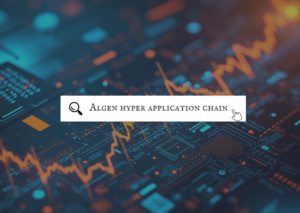Understanding Bitcoin Mining & Bitcoin Halving

Written by Hannah Parker
Experts predict the next Bitcoin halving event to take place in May 2024 when 840,000 blocks are created on the Bitcoin blockchain. This means that we are now more than halfway to the next Bitcoin halving event. The last one was recorded in 2020.
What is Bitcoin Mining & How Does it Work?
Despite being quite distinct, there are many similarities between Bitcoin mining, and precious mining metals such as gold. Both are done to earn a reward.
Both processes require a lot of energy. It’s about the physical use of energy by machines and workers to extract the gold from the ground. Bitcoin mining uses electricity to generate energy, which can be used to solve complex and challenging computational puzzles.
The beating heart of Bitcoin’s network is mining. They are responsible for maintaining the Bitcoin network and replacing centralized entities such as banks. The network would not be secure and accountable without them. Miners get rewarded for taking necessary actions.
A person who has a Bitcoin wallet wishes to transfer Bitcoin to another address using his Bitcoin address. To do this, he must create a transaction, sign it with his private and public keys and broadcast the transaction to the Bitcoin network. The goal is to add the transaction to one of the next Blocks, which is then added to the Bitcoin blockchain.
Miners are responsible for capturing these transactions and compiling them into a block of transactions. The miner must verify every transaction and ensure that there are no duplicates.
Next, the miner must broadcast the Block he has just created to the network. If the miner succeeds, he will receive a fixed amount in new BTC. This will reflect in his Bitcoin address. The second part of the mining process will require the miner to solve a complicated computational mathematical puzzle.
The miner will need to find 64-digit hexadecimal numbers, also known as a nonce. The nonce must have a unique mathematical characteristic in order to calculate a certain function, called a “hash function”. A hash function, a mathematical function, takes an arbitrary number of data as input and outputs a fixed size number. The only way to predict the output from the Hash function is by computing it.
The block’s data will be used as input by the hash function. This includes the transaction details, metadata and nonce. It is important to locate a nonce which, when assigned as an input to hash function along with other inputs, will produce a number that is less than a threshold.
Guessing is the only way to find the nonce number. Miners must guess a lot of numbers before they can find the one that meets their requirements. Miners with a greater amount of computational power or a higher efficiency will be able guess faster, and thus increase their chances of solving the puzzle. The “hash rate” is the number of “guesses,” that the computer generates per second.
What is Bitcoin Halving?
Bitcoin halving occurs when Bitcoin mining’s reward is reduced in half. Every four years, a halving occurs.
To counter inflation and maintain scarcity, the halving policy was built into Bitcoin’s mining algorithm. The reduction in Bitcoin issuance pace means that the price of Bitcoin will rise if there is no demand.
Bitcoin’s inflation rate is currently below 2% at the moment. This will drop with further halvings according to the CEO of trading platform Bitcoin Method. This is quite impressive compared to the 9.1% annualized inflation rate of the June consumer price index.
If other factors fail to send bitcoin on a rally, the next Bitcoin halving event is predicted to take place in May 2024.
It may be a good time to start investing in Bitcoin now, before the halving occurs, which reduces Bitcoin’s supply and increases the price.






